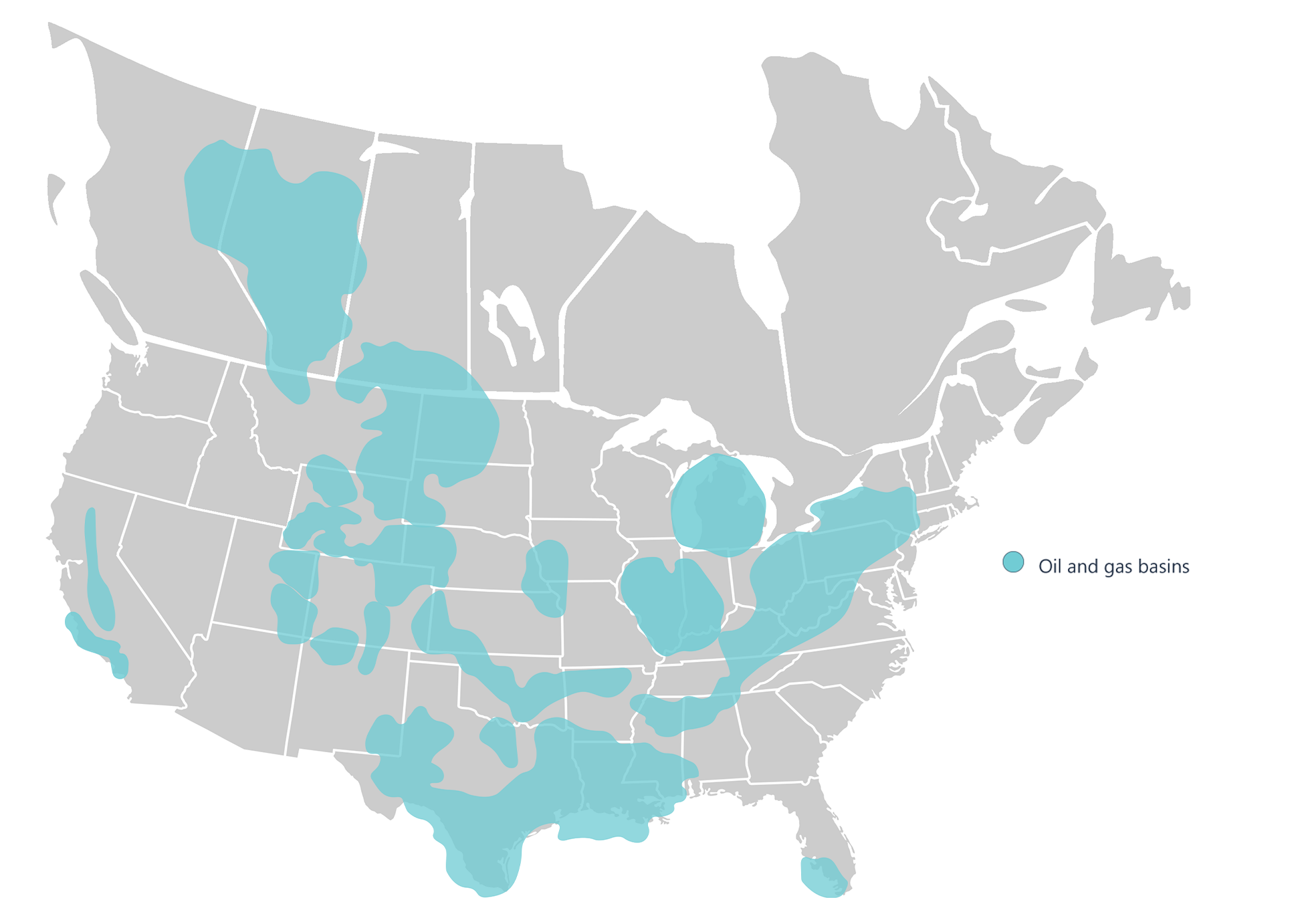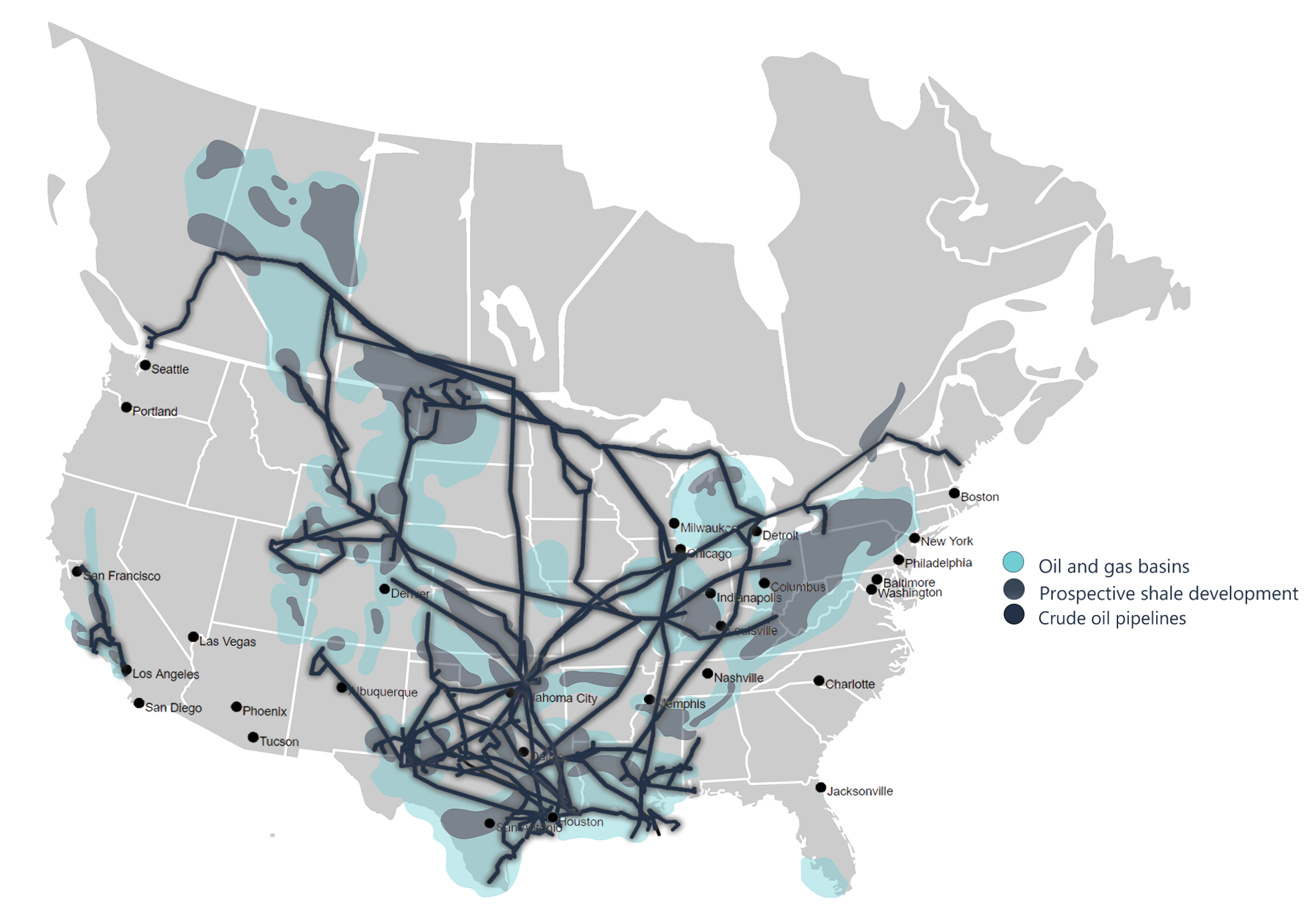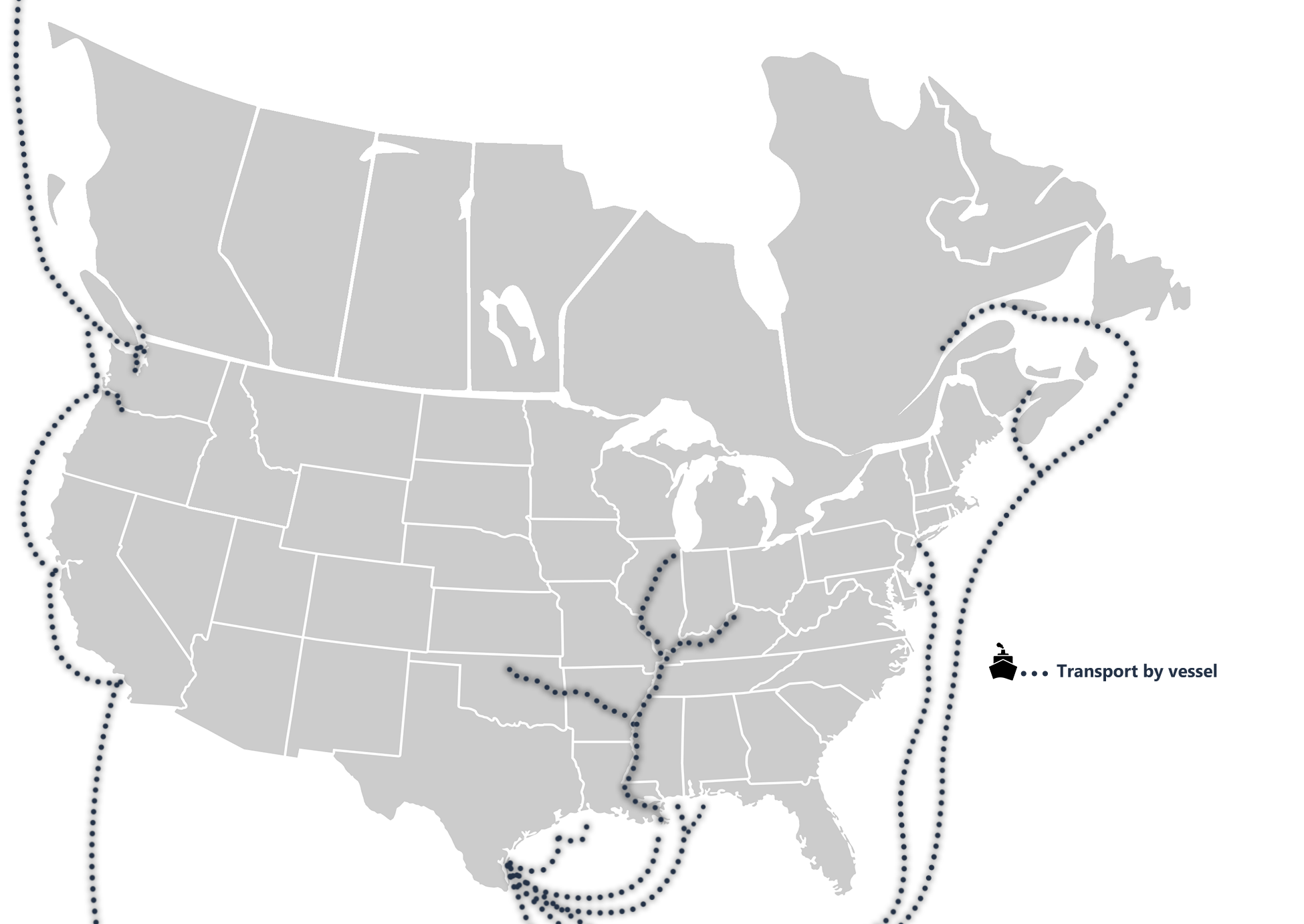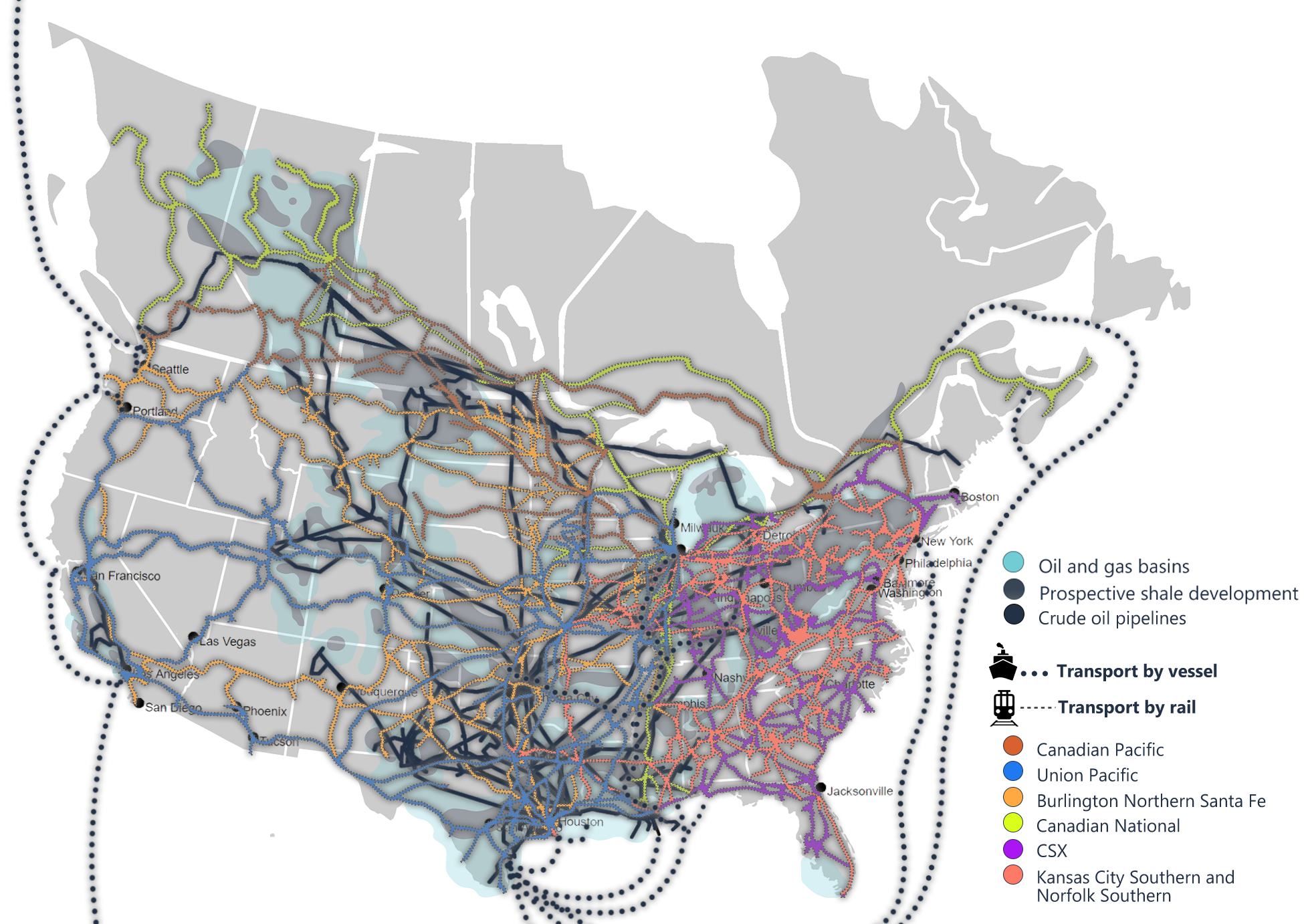INTRODUCTION FUEL SUPPLY & DISTRIBUTION SYSTEM TYPICAL DAY EMERGENCIES CASCADIA EVENT
Fuel Supply & Distribution System
Liquid Fuels Supply Chain
Liquid fuels are either sourced from renewable stock or from refined oil. Oil is drilled from wells in the field and transported by pipeline, rail, or barge for processing at refineries. At the refineries, crude oil is processed into gasoline, diesel, jet fuel, propane, and other petroleum products.
From refineries, the gasoline, diesel, and other refined products are again transported by pipeline, rail, or barge to distribution terminals where ethanol is blended into gasoline.
The finished product is loaded into trucks for delivery or transported by pipeline to the end user or retail station.
Liquid fuels supply chain. Click to enlarge.
Map of Pacific Northwest Critical Petroleum Infrastructure. Click to enlarge.
Pacific Northwest Liquid Fuels Infrastructure
Unlike most other Western states, Oregon has neither crude oil resources nor refineries. Oregon imports 100 percent of the refined liquid fuels product used in the state. Oregon, along with Alaska, Arizona, California, Hawaii, Nevada, Washington, and Western Canada form a nearly self-contained system of petroleum production and consumption.
The American states are referred to by the federal government as Petroleum Administration for Defense District Five (PADD 5). Although the system is stable, a major disruption in any part of the supply and distribution chain could create a severe and prolonged petroleum shortage.
The map at right illustrates the Pacific Northwest Critical Petroleum Infrastructure.
Crude Supply and Refineries
Oregon relies on refined liquid fuels from refineries in Washington state. Washington is a major oil refining center, with the fifth-largest crude oil refining capacity in the nation. Washington's refineries receive crude oil supplies by pipeline, marine vessel, and rail. The state's five refineries process domestic and foreign crude oils, primarily from Canada, North Dakota, and Alaska. Overall, the refinery cluster receives 49 percent of its crude supply from foreign imports (mostly from Canada), 30 percent from Alaska, and the balance from the Bakken oil field in North Dakota.
Pipeline and Marine Distribution
The vast majority of liquid fuels in the Pacific Northwest are transported via major pipelines. Transporting liquid fuels by pipeline allows for high volume continuous deliveries to markets in Washington and Oregon. The Olympic Pipeline is the backbone of the region’s liquid fuels supply chain.
The Olympic Pipeline, owned by a consortium of companies and investment firms including BP America, is the primary transportation system delivering petroleum fuels to distribution terminals in the Pacific Northwest west of the Cascades. Olympic is a 400-mile interstate pipeline system that transports gasoline, diesel, and jet fuel from the Cherry Point and Anacortes refinery clusters in northwest Washington state to delivery points in western Washington and Oregon, including the Seattle and Portland metropolitan areas.
Kinder Morgan Pipeline, owned and operated by Kinder Morgan Inc, starts where the Olympic Pipeline ends at the Port of Portland. The Kinder Morgan Pipeline connects eight liquid fuels terminals that form the Portland petroleum terminal cluster supplying most Oregon’s liquid fuels needs. More information about the Portland petroleum terminal cluster is provided below. From the Kinder Morgan Terminal in Portland, the pipeline supplies refined product both to Eugene, the only other petroleum terminal in the state, and to the Portland International Airport (PDX).
From the Kinder Morgan Terminal in Portland, the pipeline travels 115 miles delivering 2,000 bbl/hour of diesel and gasoline continuously to the Kinder Morgan Terminal in Eugene, Oregon. The Kinder Morgan Pipeline also travels 8.5 miles delivering 17,000 bbl of jet fuel to PDX as needed by the airport.
Marathon Northwest Products Pipeline System (MNPPS), owned and operated by MNPPS, is a 760-mile refined products system that extends from refineries and connected pipelines in Salt Lake City, Utah to distribution terminals in Utah, Idaho, and eastern Washington, including Pasco, Spokane, and Fairchild Air Force Base.
MNPPS receives products from five refineries in Salt Lake City. The pipeline can also receive shipments from interconnecting carriers in Salt Lake City.
The system passes through Oregon from Idaho as two 6-inch lines terminating at the Tesoro Logistics terminal in Pasco, Washington, which is approximately 30 miles north of the Oregon border.
PADD 5 is not one market for transportation fuels, but rather six distinct regional markets. Because there is limited pipeline infrastructure connecting the six regional markets, marine movements within PADD 5 play a key role in moving transportation fuels from regions with excess supply to regions with supply shortfalls. As a result, marine vessels are generally highly utilized, and there is minimal capacity to increase intraregional shipments to manage supply disruptions.
Oregon Liquid Fuel’s Supply and Distribution System
Map of Oregon and Washington Fuel Supply and Distribution System. Click to enlarge.
More than 90 percent of transportation fuels used in Oregon are produced in refineries in Washington and delivered via the Olympic Pipeline and barge to eight Portland-area terminals. From these terminals, some of the product flows via the Kinder Morgan pipelines south to Eugene or to PDX. The Eugene distribution terminal serves southern, central, and eastern Oregon. Tank barges also carry some refined petroleum up the Columbia River to Pasco, Washington to service eastern Oregon communities. Additionally, an estimated 1,500 tanker trucks deliver fuel from the Portland-area terminals to about 2,400 fueling locations throughout the state.
Less than 10 percent of the refined petroleum products used in Oregon originate from refineries in Salt Lake City and the San Francisco Bay Area.11 From Salt Lake City, the Marathon Pipeline transports product to a distribution terminal in Pasco, Washington. From the Pasco facility, trucks deliver fuel to eastern Oregon communities.
San Francisco Bay Area refineries supply small quantities of fuel to a Chico, California terminal from which trucks deliver supply to southern Oregon communities.
Portland Terminals
The Portland Terminal Cluster (PTC), located along the Columbia River in Portland, Oregon, is the primary source of petroleum product supply storage for Oregon. The cluster is comprised of eight bulk terminals with a combined storage capacity of 7.4 million barrels of liquid fuels, including gasoline, distillate, jet fuel, natural gas liquids, and ethanol. Product is primarily supplied into the cluster by the Olympic Pipeline from refineries in Washington state. From the PTC, refined product is distributed primarily by truck throughout the state, pipeline to the Eugene distribution terminal to central, southern, and eastern Oregon markets and jet fuel to PDX, and by barge to Pasco, Washington for distribution to Washington and eastern Oregon markets.
How Our Transportation Fuels Get to Us
The maps below show where our transportation fuels originate, where they are transported through pipelines, and then moved across the country through rail and vessel transport.







Learn more about how our transportation fuels get to us.
INTRODUCTION FUEL SUPPLY & DISTRIBUTION SYSTEM TYPICAL DAY EMERGENCIES CASCADIA EVENT



